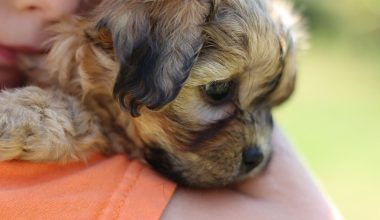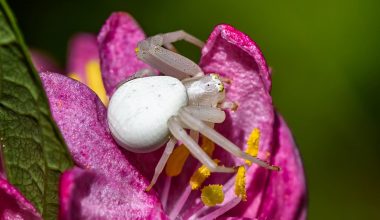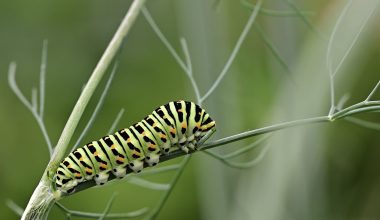Each animal has its importance and our planet is filled with animals. Farm Animals have been in use for ages. They facilitate us with labor and production of milk, eggs, meat, leather, fur, and much more. Here are some of the important and most common farm animals in the world.
Common Farm Animals
1. Sheep
One of the most supportive and lovable farm animals for humans is sheep weighing 40-130 kg and growing about 50 inches long. For generations, sheep have been used for their fluffy wool and our winters go so easy because of the wool we get from sheep. 0.9-13 kg of wool is obtained from a single sheep annually and it is quite easy to breed sheep because they are herbivorous and survive on water, plants, and grass. A lot of exotic species of sheep are prepared for a better quality of wool and a well-known example of such cloned sheep is Dolly.
Also Read: 10 Amazing Land And Water Animals In The World
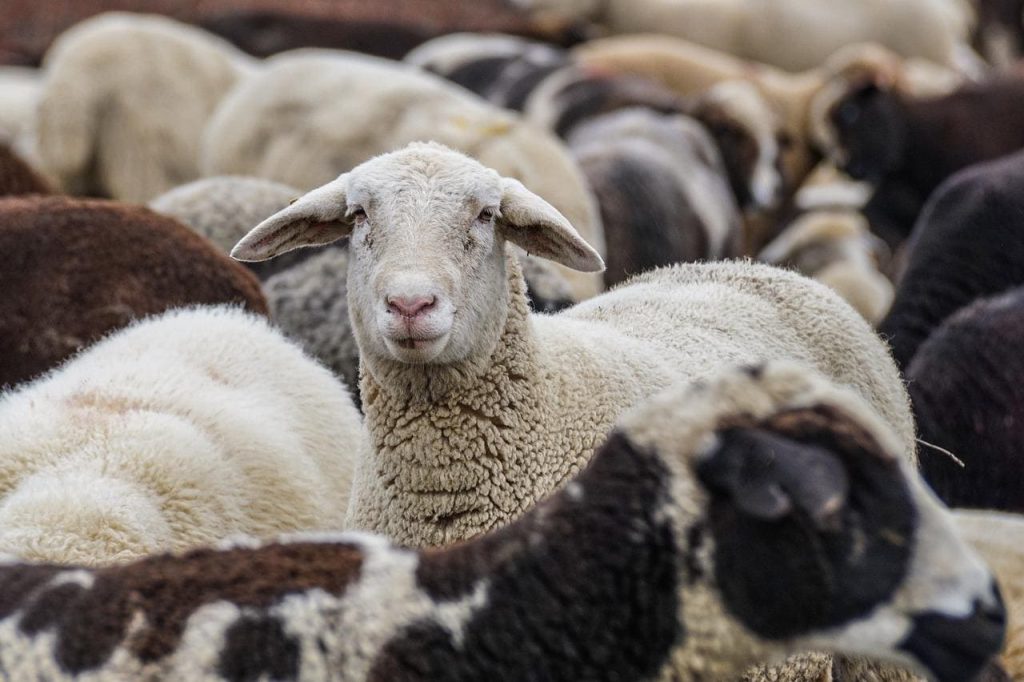
2. Goat
Weighing 54-77 kg, a goat grows 45-67 inches long and has a furry body, usually white, brown, or cream. Goats are found in tropical and subtropical regions of Asia, America, and Europe and have a life expectancy of about 12 years. A goat can be easily distinguished by its horns, slender body, and horizontal pupils, and being herbivorous, it nourishes on plants, grass, and things coming it’s way. A goat is raised and cultivated for ages for its meat, milk, and fur.
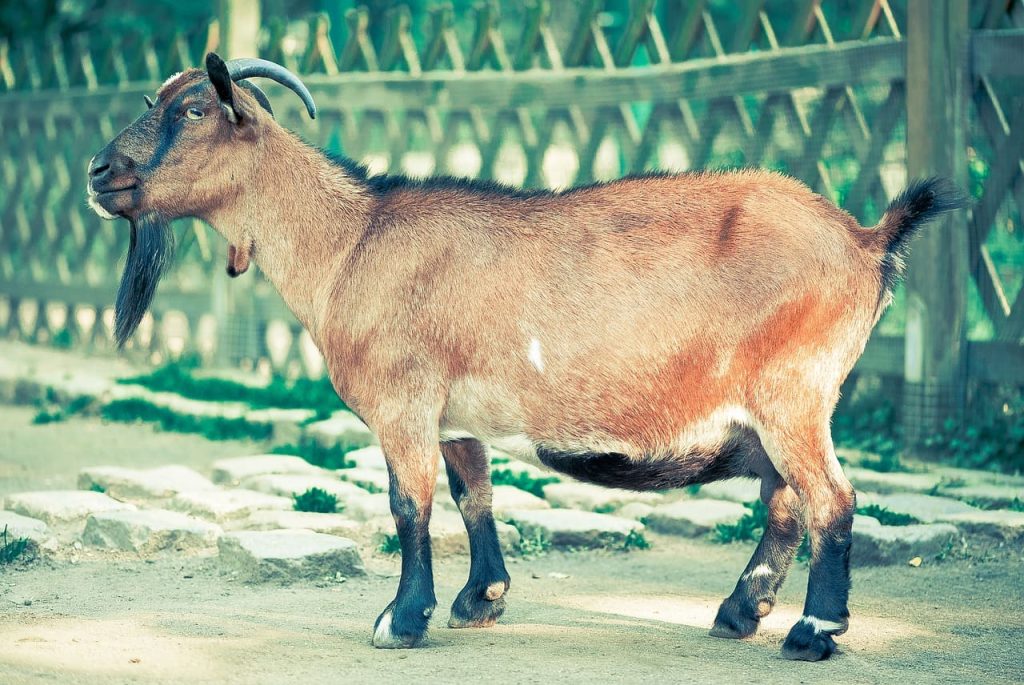
3. Cow
A cow is one of the animals that start with C and around 920 breeds of cow are there on our planet and they have been one of the most valuable animals. A cow grows 6 feet tall and weighs about 544 kg with a life expectancy of 15-20 years. It is the most popular farm animal and the reason for being so popular is its advantages.
These popular animals with 3 letters raised for their milk, meat, and dairy products. All the dairy products like butter, ghee, cheese, cream, and curd are gained through cow’s milk. Around 36 liters of milk can be produced in a day from a single cow. Being so useful, in return, it only demands grass, plants, and fodder as it is herbivorous.
Also Read: 10 Different Types of Australian Insects
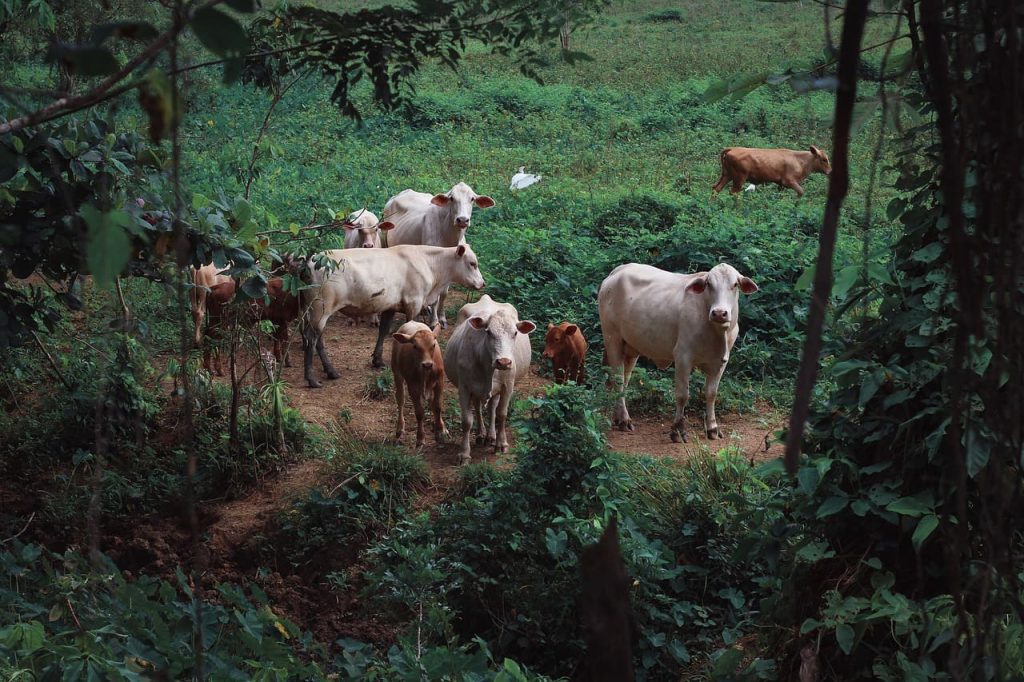
4. Chicken
Weighing just 2-4 kg, a chicken grows around 27 inches tall and can be seen all around the world in grasslands, farms, and woodlands. It has a feathery body which is usually yellow, orange, red, white, or brown. Male chickens are usually known as cock and females are known as hens around 25 billion chickens are present all over the world.
It is an omnivorous animal and feeds on insects, seeds, plants, and small animals. Having a great memory and outstanding vision, a chicken is raised for its eggs. Around 276 eggs are produced yearly by a single chicken and are a great source of energy for people who love eating eggs.
Also Read: 10 Apex Predators in the World
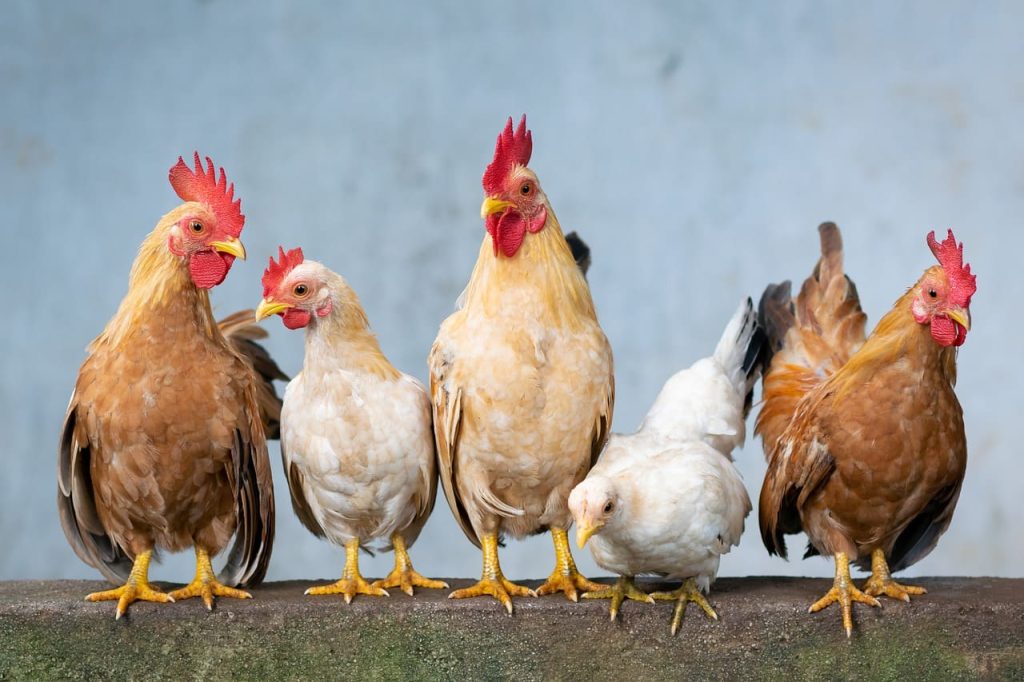
5. Pig
This tremendously smart and intelligent animal grows 35-79 inches long and weighs around 75-150 kg. It has a hairy pink, black, or yellow body and has a lifespan of 15-20 years. Found in grasslands, forests, and farms in Asia, Africa, Europe, Australia, and America, pigs have a population of around 2 billion on the planet. It is also listed as one of the animals with small eyes in the world.
We all have heard of a pig being a dirty and lazy animal but, in reality, the pig is a really clean animal who loves enjoying mud for keeping its body cool. Pig is raised for their high-quality meat which is eaten worldwide for its enrichment in taste and nutrition.
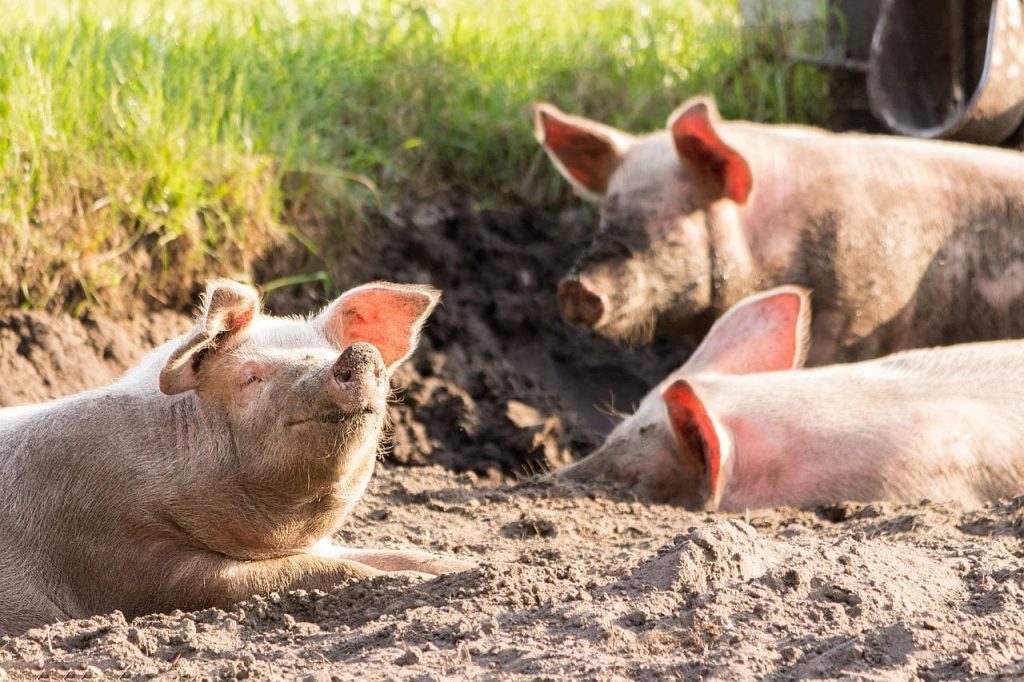
6. Honey bee
This small insect weighing just 0.002 kg and 0.6 inches tall is of great significance. It has a golden yellow-brown body with a shell and is found in forests, grasslands, and gardens all around the world except Antarctica. It is an herbivorous insect and noshes on the nectar of flowers and plants. The honey bee can lay 800,000 eggs in its entire life and a complete bee community produces 36-45 kg of honey in one year. Presently, apiculture is a great business and is earning grand profits.

7. Rabbit
One of the cutest domesticated loyal animals loved by everyone all around the world is the rabbit. Growing 0.4-2.9 kg, a rabbit grows 12-16 inches tall and has a furry white, orange, or gray body. It is found in forests, woodlands, and meadows all over the world and has a life expectancy of 10-12 years. Its long ears not only add beauty to it but also maintain its body temperature. Rabbit has been raised for ages for its cute, cuddly nature, and high-quality meat and is known as a symbol of good luck and protection.

8. Horse
One of the oldest buddies of man is a horse. A horse grows about 7 feet long and weighs 381-544 kg with a hairy black, white, or brown body. The horse is found all around the world in forests and grasslands. The horse has been considered a royal animal and has been in use for ages for transportation, traveling, and in wars. It has been used for sports, leisure, functioning activities, and many other healing also. A horse has the most enormous eyes among all animals and has brilliant vision. Its strength, loyalty, and activeness make it an excellent pet.
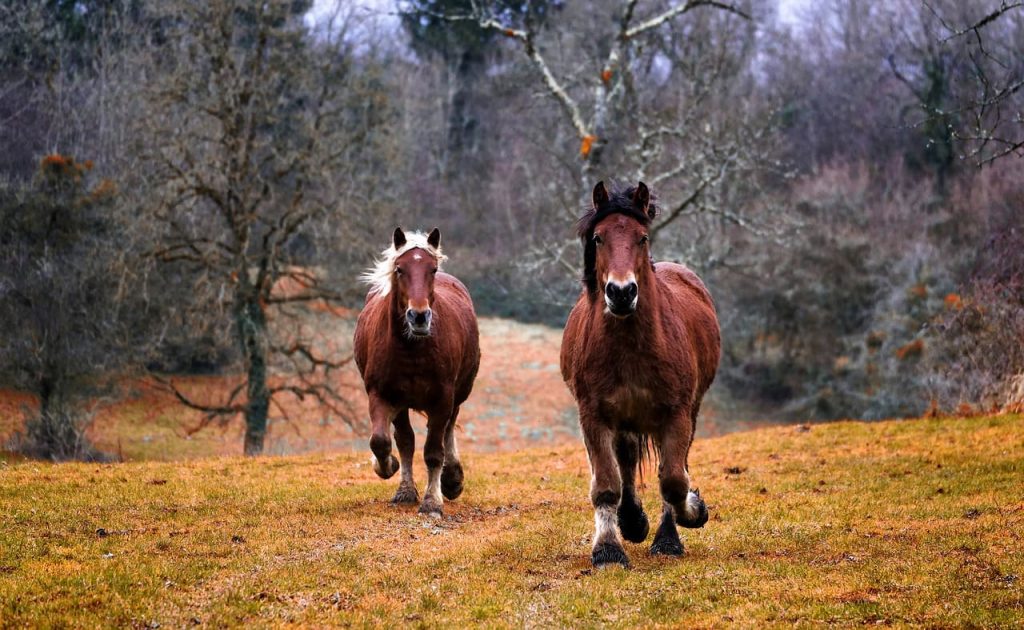
9. Donkey
Around 50 million types of donkeys are present throughout the world but sadly, donkeys are one of the most unappreciated animals. Growing 31-63 inches, the donkey weighs about 180-1060 lb. Donkeys have been in use for a very long time almost 5000 years. It is domesticated for the transportation of goods and there is a great business of donkey’s milk. Donkey’s milk is highly nutritious rich in vitamins and is a great source of immunity. It helps cure asthma, respiratory problems, eye infections, and issues like fatigue and abdominal pain.
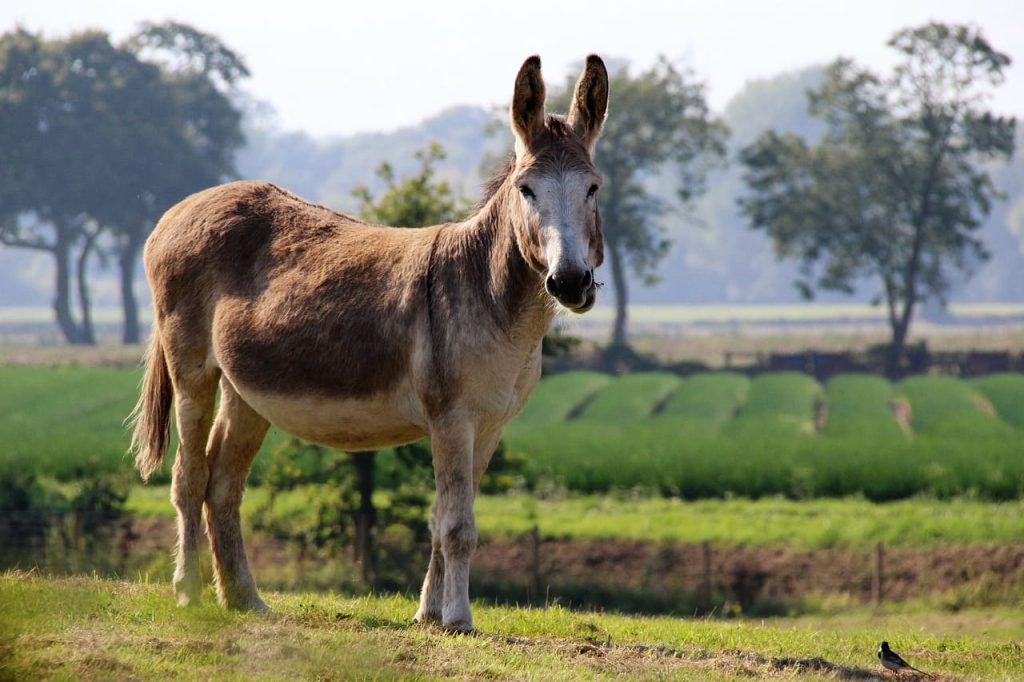
10. Turkey
One of the most well-liked meat birds and one of the dumbest animals in the world. This bird weighs around 5-7 kg and grows 39-49 inches long with a life expectancy of about 13 years. It has a feathery white, black, or brown body found in fields, forests, and woods of North America. This strong bird can be simply distinguished from hens by the colorful feathers on the chest and tail. It has an omnivorous diet and feeds on nuts, leaves, fruits, insects, and berries. It is domesticated for its meat and is one of the famous feasts in America.
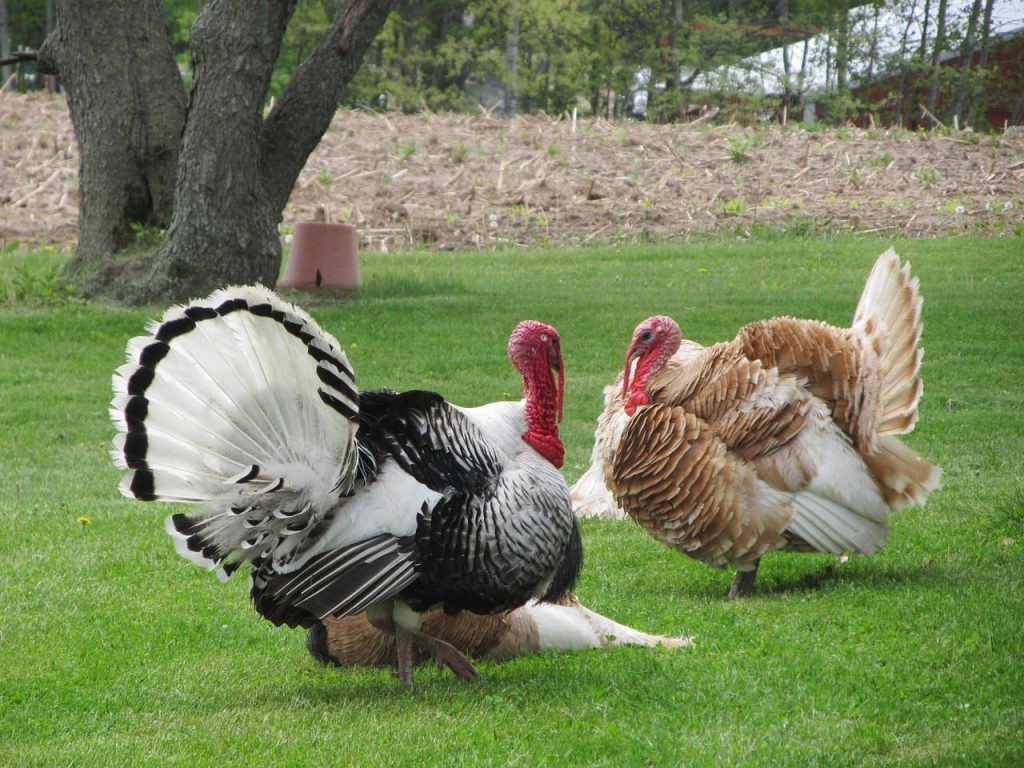
11. Goose
The goose is one of the popular webbed feet birds and is believed to have descendants of two basic types of geese domesticated 4.000 years ago. It can grow between 32 to 37 inches in length and its average weight is between 8 to 22 pounds. The bird species are active during the day and feed on worms, corn, wheat, sunflower seeds, weeds, leaves, and grass. They used to communicate with the help of loud honking noise among themselves. The average lifespan of a goose is between 20 to 25 years in the wild.

12. Duck
Ducks are also one of the popular species of water birds which is relatively shorter in size along with shorter necks where closely they are related to swans and geese. Ducks are important to humans both culturally and economically. The dietary habits are omnivorous and love to feed on grass, aquatic plants, insects, seeds, fruit, fish, crustaceans, and other types of food. The average lifespan of a duck is between 5 to 10 years in the wild.
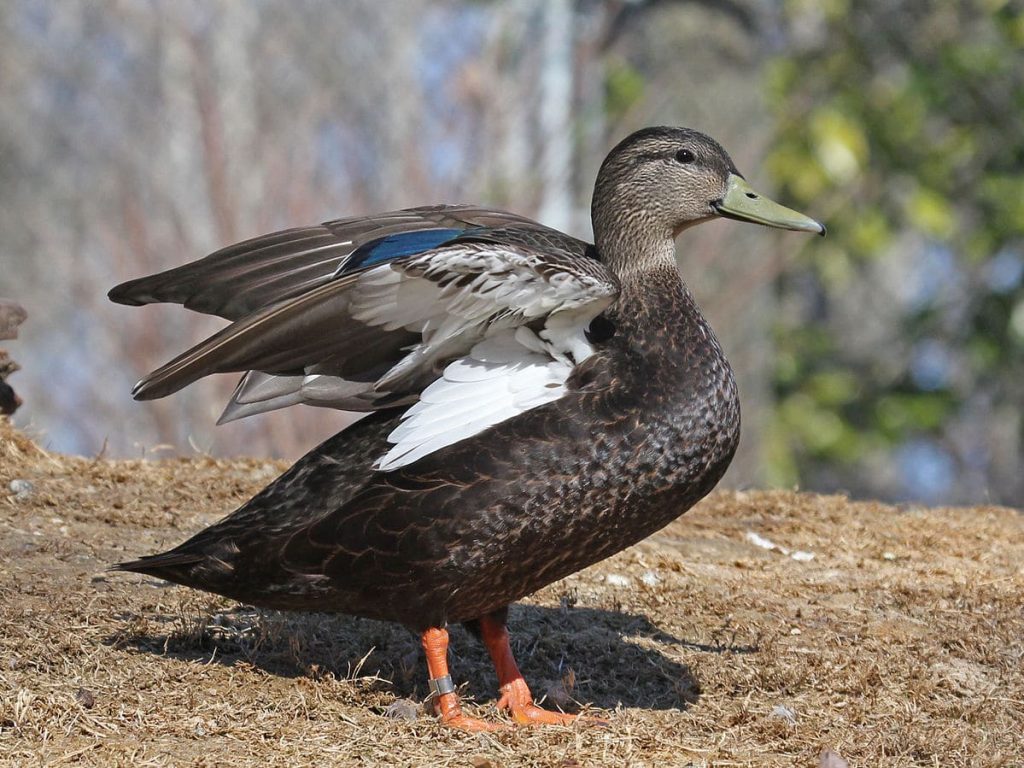
13. Llama
The llama is one of the most popular farm animals in the world which has been used widely since the Pre-Columbian era. They are long-neck animals and love to be in the herd. It is believed that the ancestors of the Llama originated from the Great Plains of North America approximately 40 million years ago. The average lifespan of a Llama is upto 20 years in the wild.
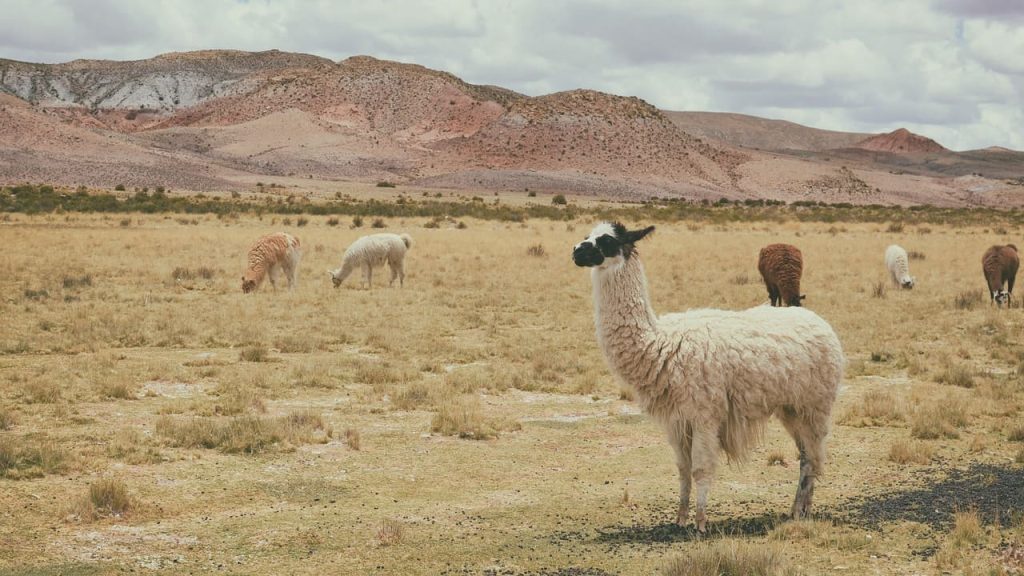
14. Ox
Ox is also known as oxen and they are also known as bullocks in India and Australia. Oxen prey on grass, plants, and grains, however, their main threats are humans, wolves, and bears. An ox is a member of the cattle breed and it is one of the popular farm animals for humans. The average lifespan of an Ox is between 18 to 22 years in the wild.
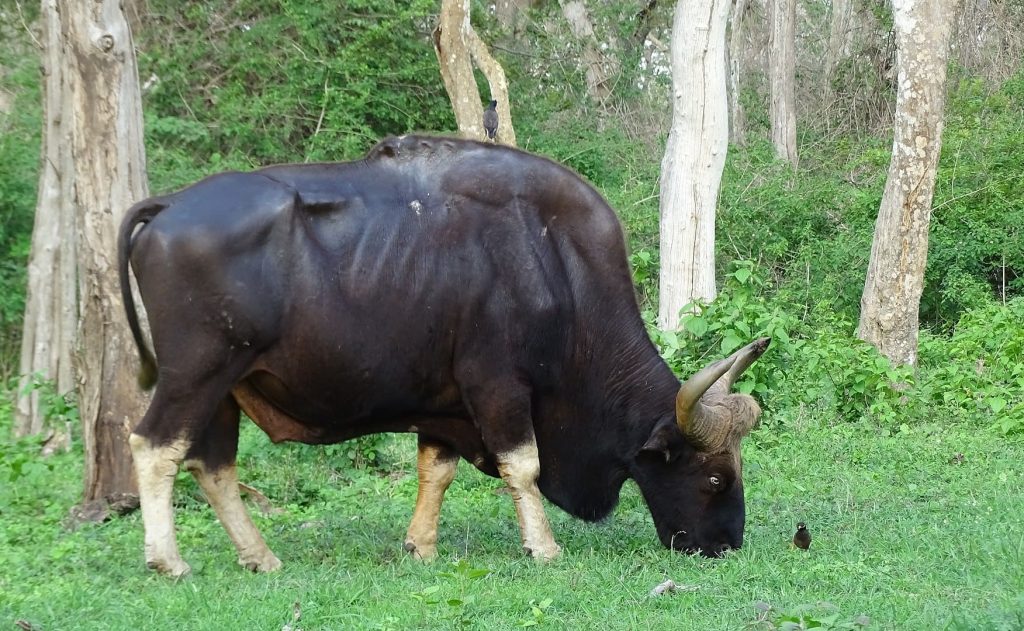
15. Bison
Bison is one of the biggest animals that belong to the family of Bovidae. It is considered one of the closest relatives of Africans, water buffalo, gazelles, and antelopes. It is also one of the largest land mammals in North America where they can reach upto a length of up to 10 feet and the average weight is between 930 to 2200 pounds along with a height of 6.6 feet. The average lifespan of bison is between 12 to 20 years in the wild and captivity, they can survive upto 30 years.
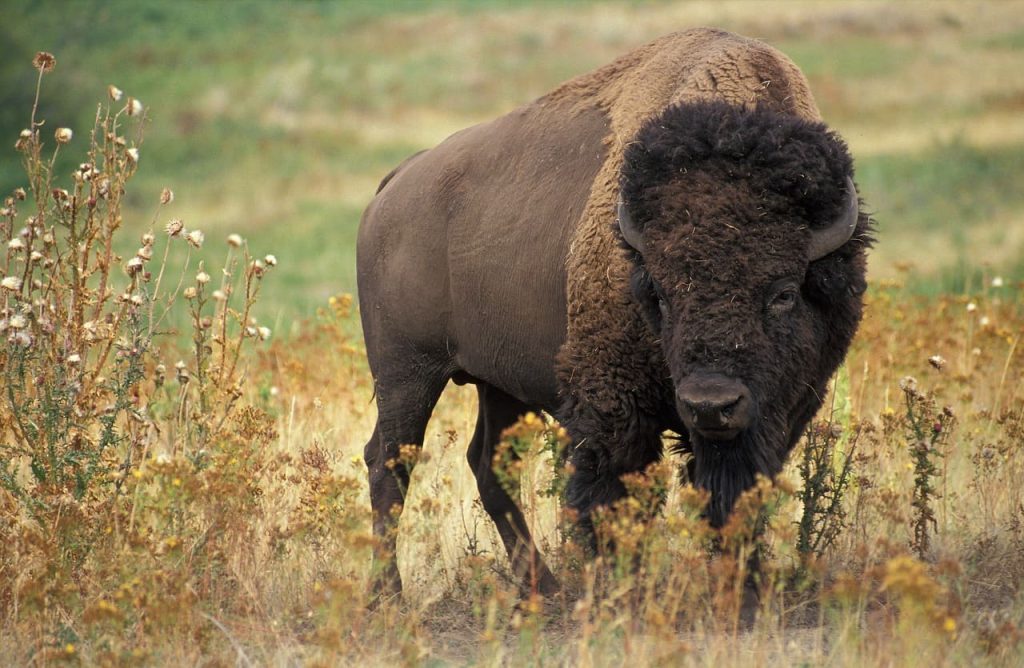
16. Moose
Moose are considered the largest member of this deer family and are mostly seen in the northern hemisphere and prefer to thrive in the colder climate. The dietary habits are herbivorous and prefer to feed on flowering plants, shrubs, leaves, and small branches of the trees. Mosses are best known for their unique antlers and this is also the fastest-growing organ of the moose. The average lifespan of mosse is between 5 to 25 years in the wild and 20 to 25 years in captivity.

17. Red junglefowl
The Red junglefowl is a tropical bird that belongs to the family Phasianidae. It is mostly seen in the regions of Southeast Asia and parts of South Asia. Red junglefowl was formally known as the Bankiva or Bankiva Fowl and it is the same species that has given rise to the chicken (Gallus domesticus ); the grey junglefowl, Sri Lankan junglefowl, and green junglefowl where it has contributed the genetic material to the gene pool of the chicken. The body length ranges between 42 to 75 cm and the average weight is 485 to 1,450 grams. The avarage lifespan of Red Junglefowl is between 10 to 30 years.
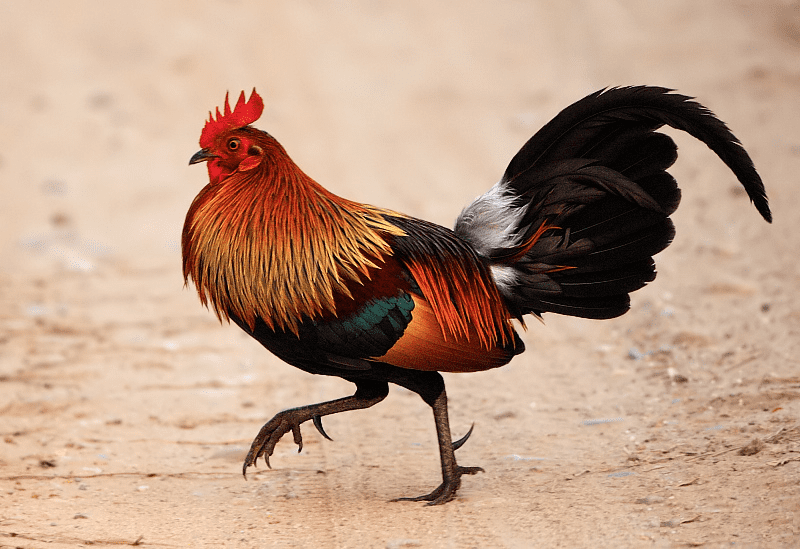
Image Source: Wikimedia
18. European rabbit
The European rabbit is a small mammal species native to southwestern Europe and northwest Africa. It can grow upto a length of 40 cm and avarage weight between 1.2 to 2 kilograms. They belong to the family Leporidae, which also includes hares. It is most active from dusk until dawn and they will start grazing on or near the warren, but move further away as it gets darker. The primary diet includes plants, or parts of plants, with the highest nutritional value. They obtain water from green vegetation, however, they travel when they do not get enough water. The avarage lifespan of a European rabbit is upto 9 years in the wild.
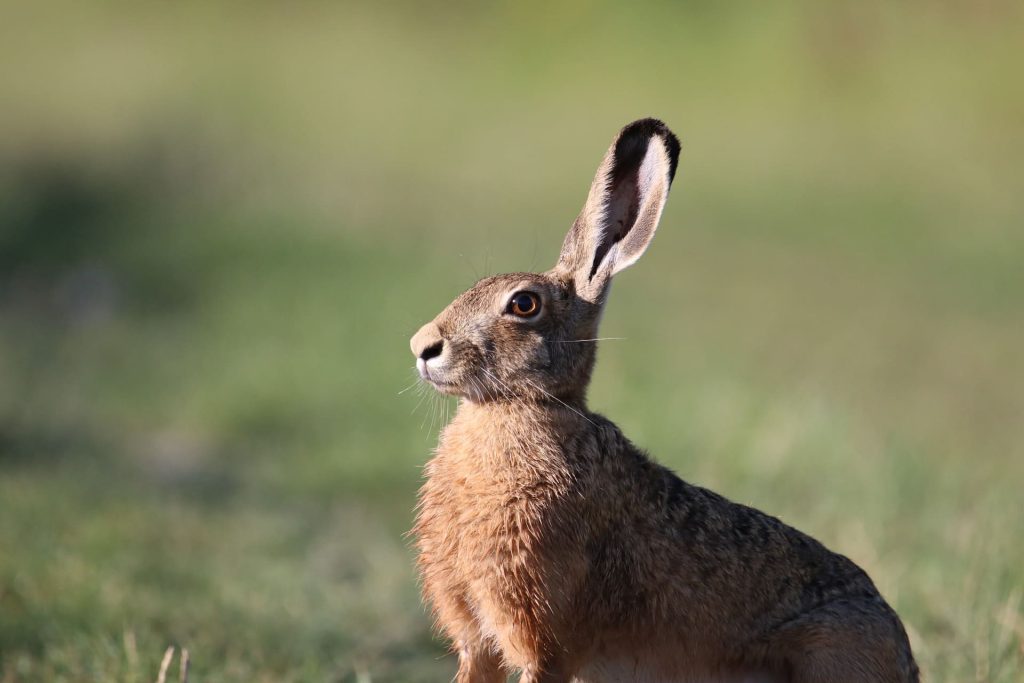
19. Mule
A mule is a domestic animal created through the interbreeding of a male donkey and a female horse. The anima species can reach between 47 to 59 inches in height and the average weight is between 820 to 1000 pounds. The dietary habits are herbivores in nature and feed on grass, vegetables, and weeds. Mule has an average lifespan of 30 to 50 years. The natural mules are wolves, foxes, and lions. They will protect themselves with the help of hinds from predators and can deliver a kick from all directions.

20. Merino Sheep
Merino Sheep are also one of the far animals that do not have to turn their heads to see behind them because they have a 360-degree field of vision. They have a natural oil known as Lanolin that helps shed water and makes them water-resistant. They did not have teeth in their upper front jaw and could produce up to 227 lbs of wool in their lifetime. The first Merinos were imported to the US (to Vermont) in 1802. By 1837, Vermont’s flock had grown to more than a million head. The average lifespan of Merino sheep is between 10 to 12 years.
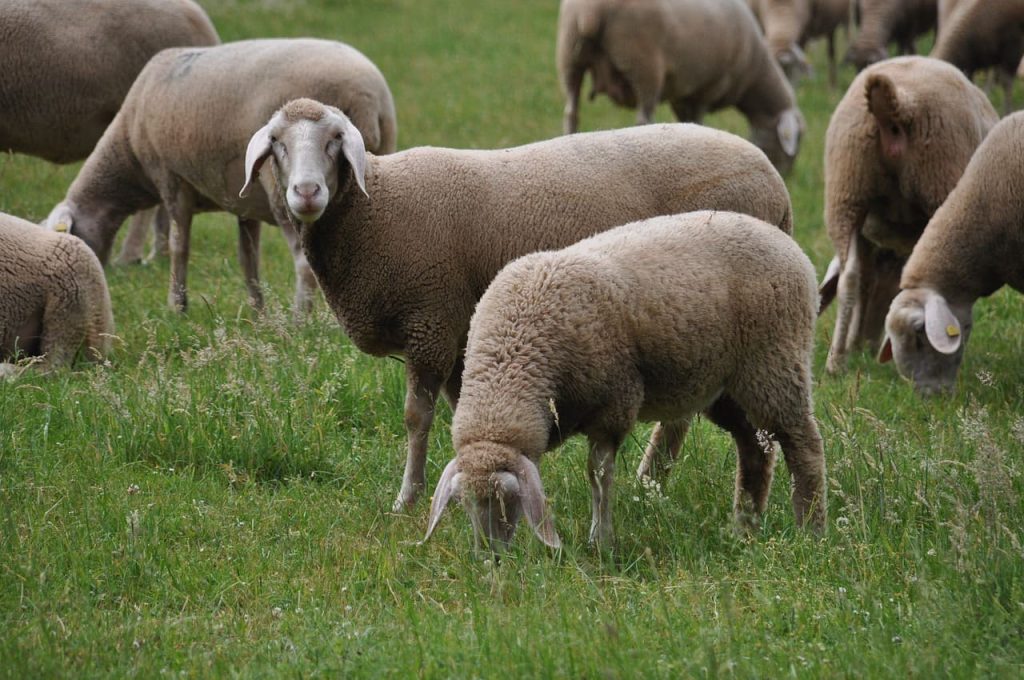
21. Angora goat
Angora goat is one of the common farm animals historically known as Angora or Ankara keçisi (Turkish language) mainly used for producing lustrous fiber called Mohair. It is believed to have originated in the area of Angora in Asia Minor between 1571 and 1451 B.C. The breeding of Angora goat was initiated in Turkey close to Ankara hence the name given to the goat species. The avarage lifespan of Angora goats is upto 10 years in captivity if they receive good care.
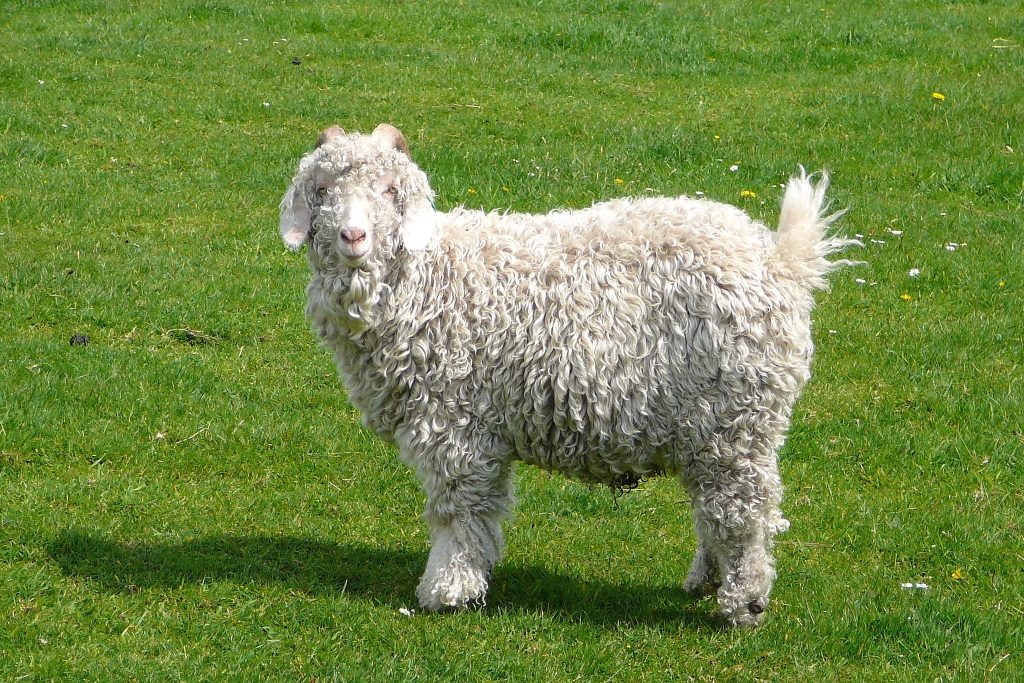
Image Source: Tim Green
22. Quail
Quail is one of the quietest animals in the world and prefers to thrive in areas covered with bushes and open spaces. These farm animals are domesticated and kept as poultry that produce eggs of high quality. Talking about their appearance, they are covered with brown, black, white, grey, and blue feathers. The coloration and arrangement create a scale-like pattern on certain parts of the body. The main predators of quail are cats, foxes, coyotes, raccoons, hawks, owls, and snakes.
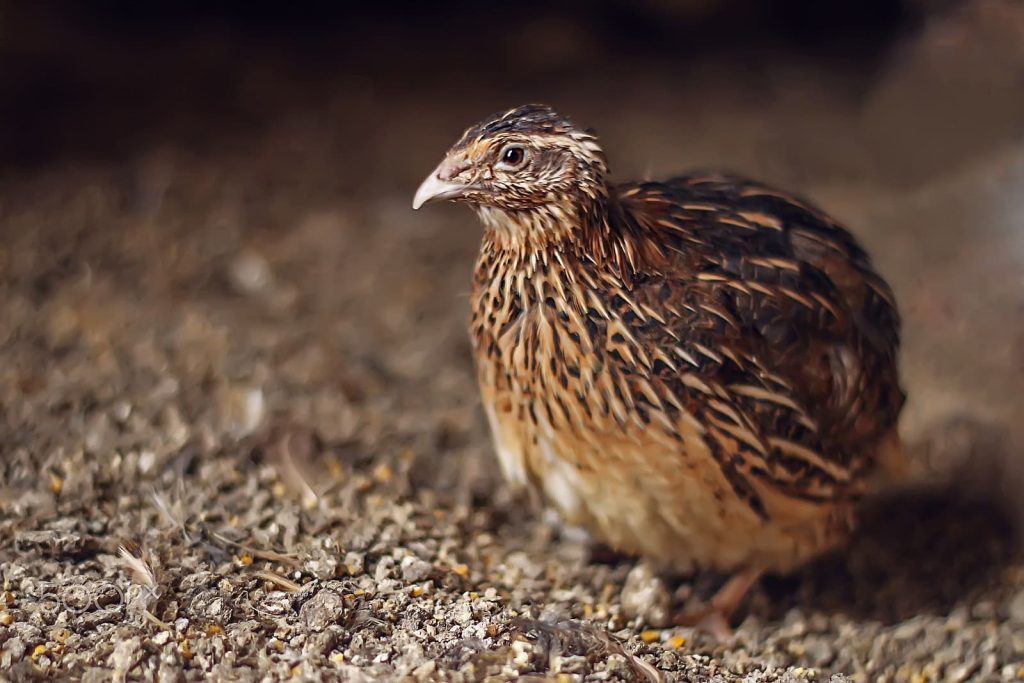
23. American Pygmy
The American Pygmy is an American breed of goat derives from the West African Dwarf group of breeds of West Africa. It is also known as Pygmy or African Pygmy, however, it is quite different from the British Pygmy breed. They are small and stocky and come with heavy bones, Talking about the coloration, there are seven color variations recognized in the breed standard. It is primarily used for meat or as a companion animal, many of them are kept in zoos as well.
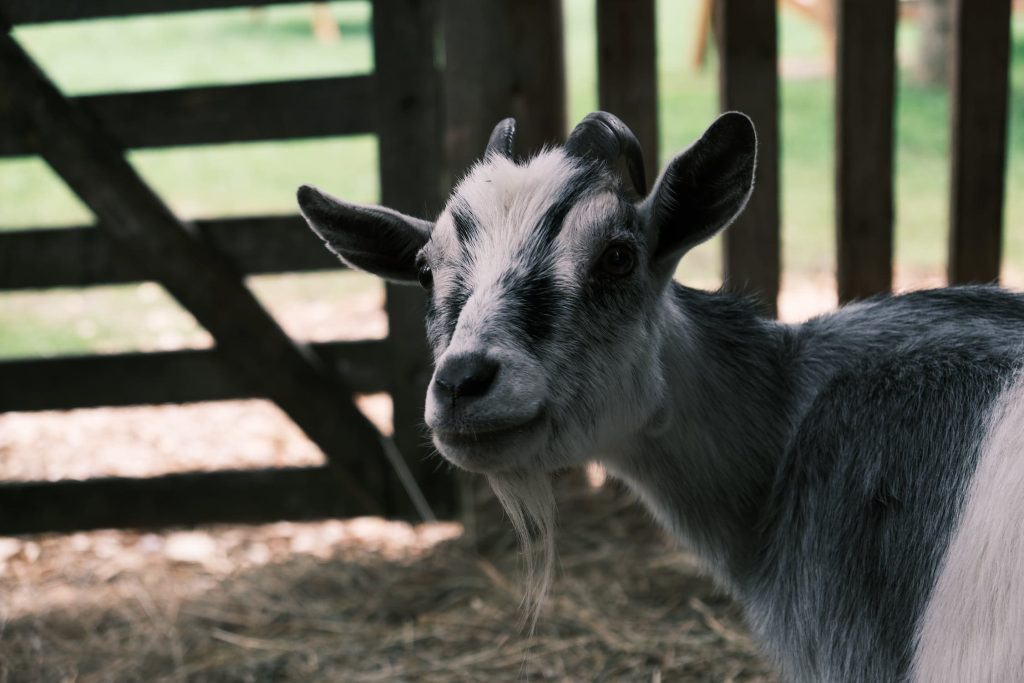
24. Guinea pig
The Guinea pig is listed as one of the most loyal animals that was brought to Europe by Spanish sailors in the 15th century. They instantly become popular because of their docile nature and responsiveness to feeding. It is also used as a model organism during the 19th century to study diseases such as tuberculosis, scurvy, and diabetes. These social animals like to live in herds in the wild. The pregnancy lasts for 59 to 72 days and ends with 3 to 4 pups, however, the number can go upto 13 on rare occasions.
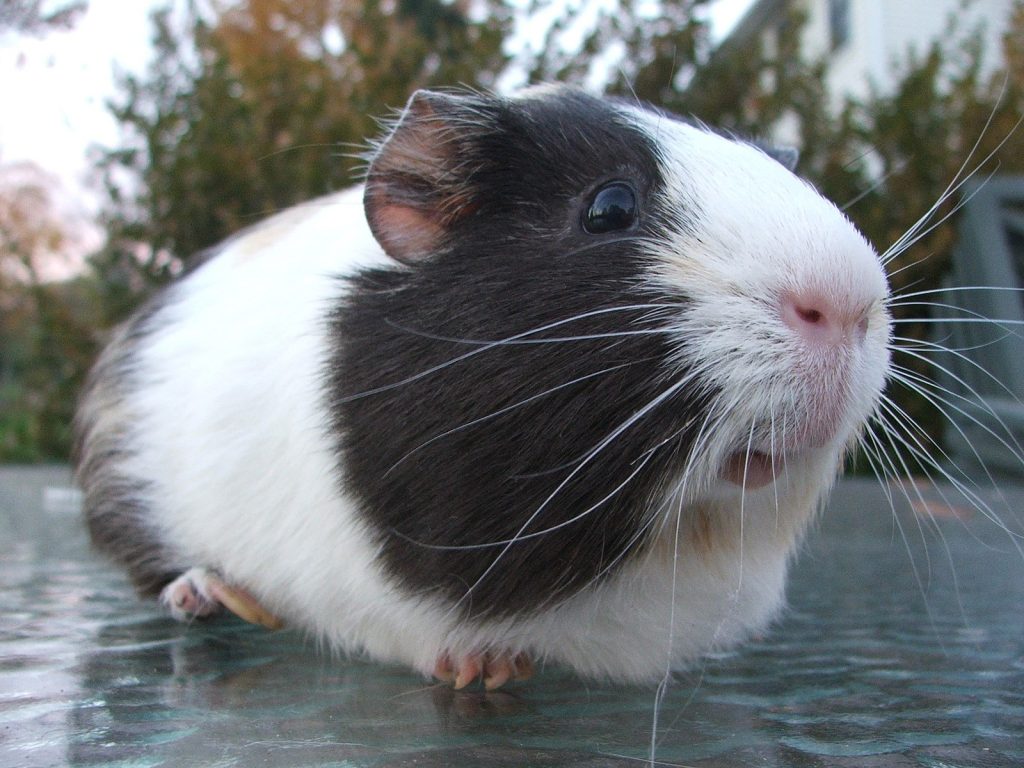
25. Swans
Swans is a beautiful white bird that belongs to the family Anatidae within the genus Cygnus. These birds are very closely related to geese and ducks. Swams are among the largest flying birds and even the largest members of the waterfowl family Anatidae. Teh avarage lifespan of swans is between 20 to 30 years. The best part is that they are found on both sides of the Equator across the Northern and Southern Hemispheres.

26. Gypsy horse
A gypsy horse called by different names such as the Traditional Gypsy Cob, Irish Cob, Romani Cob, Gypsy Horse, or Gypsy Vanner is a domestic horse breed that comes from the British Isles. The horse species is quite associated with the Irish Travellers and English Romanichal Travellers. Since 1850, these horse breeds have been used for traveling people in the British Isles began to use this horse to pull their caravans called vardos.
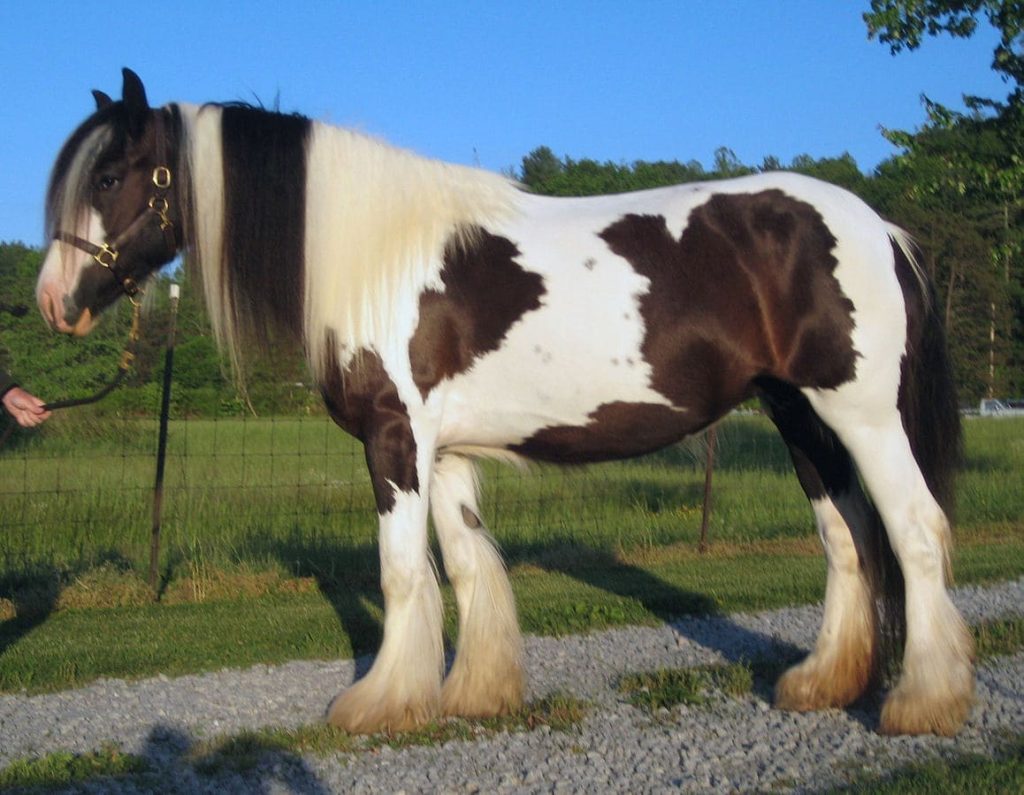
Image Source: Wikimedia
27. Fainting goat
A fainting goat is an American goat breed that is characterized by myotonia congenita which is a condition that causes it to stiffen or fall over when excited or startled. It is also known as myotonic goat, Tennessee fainting goat, fainting goat, falling goat stiff-legged goat, nervous goat, and were brought to Tennessee in the 1880s. These goat species are very important for researching and clarifying the role of chloride in muscle excitation.
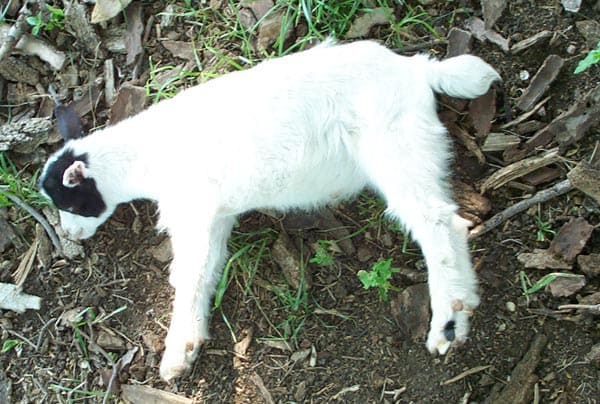
Image Source: Wikimedia
28. Gayal
Gayal is a large domestic cattle found in Northeast India, Bangladesh, Myanmar, and Yunnan, China. The scientific name is Bos frontalis and the common name includes Drung ox or mithun. The body length of Payal is between 2.5 to 3.3 meters and the average weight is between 650 to 1000 grams. Talking bout the apperance, the head and body skin of gayals is blackish-brown where the lower portion of the limbs is white or yellowish. The primary diet includes tree fodders, shrubs, herbs, and other natural vegetation.
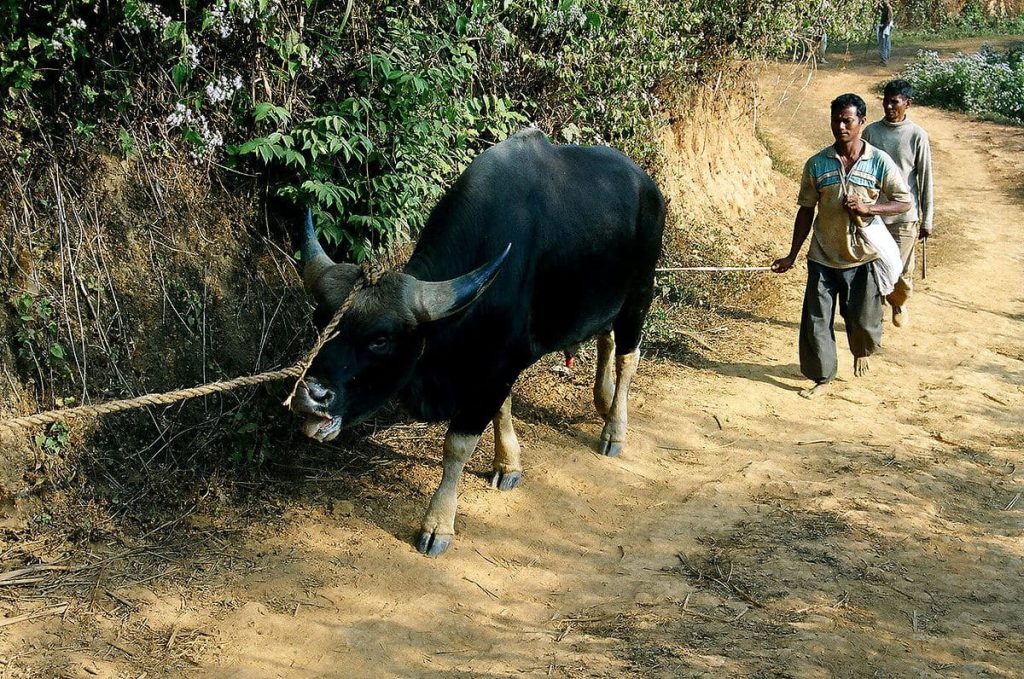
Image Source: Wikimedia
29. Partridge
Partridge is a bird species that belongs to the pheasant family Phasianidae. The body length of bird species is between 28 to 32 cm and the average weight is between 385 to 500 grams. They are rotund birds that are brown-backed, with grey flanks and chests. The belly is white and usually marked with a large chestnut-brown horse-shoe mark in males and also visible in females. The dietary habit is herbivores in nature and feeds on seeds, cereals, and grass leaves.
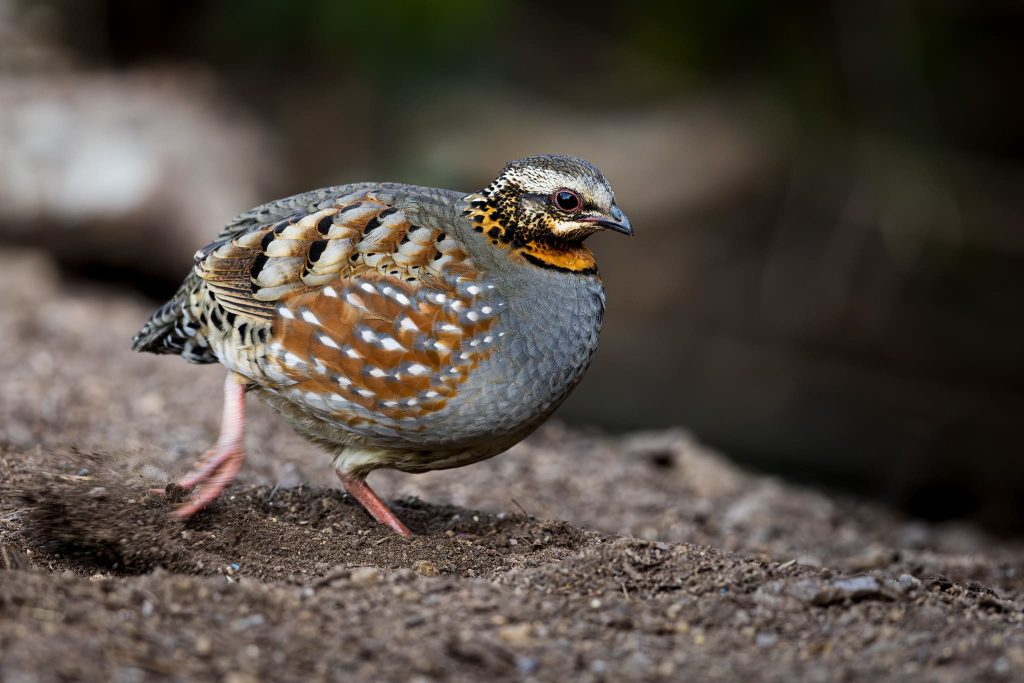
Image Source: Hari
30. Bees
Bees are now one of the most common farm animals that belong to the Apidae family. As of now, approximately 20,000 known species of bees are found on every continent except Antarctica. They have a three-part body and come with 6 legs, and 2 compound eyes made up of thousands of tiny lenses. There are 3 simple eyes on the top of the head along with one pair of antennae and 2 pairs of wings.
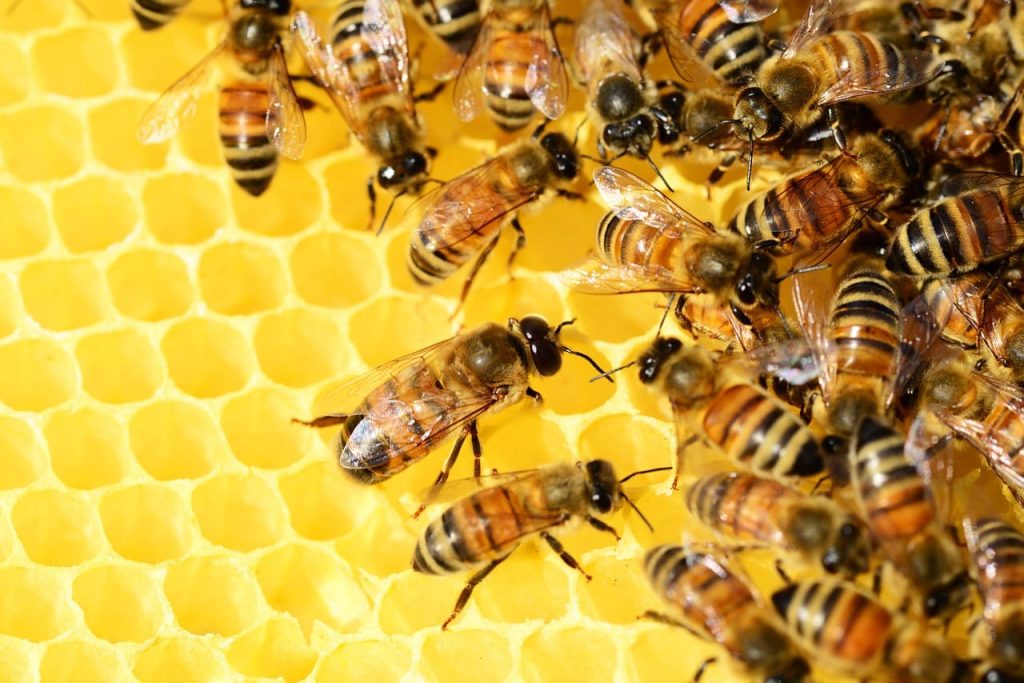
These are the names of some of the amazing farm animals in the world. Kindly share and post your comments.



